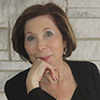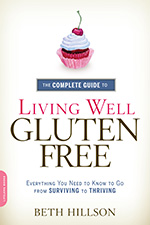By Beth Hillson
When I tell people I grew up in an Orthodox Jewish community in Old Town, Maine, they always ask the same question: “How did your family end up there?”
For years I would stare blankly when asked that question, shrug my shoulders and say, “I don’t know.”
When you’re growing up, your life is not occupied with your ancestral tree or stories of migration. Truthfully, I couldn’t wait to go off to college, make my own life, and put Old Town in the proverbial rear view mirror. But, it wasn’t that simple. The ties to my Yiddish-speaking grandparents, who kept kosher and observed all the traditions, and to my parents who maintained a slightly more modern version of those observances, were not easily shaken off. No matter how far from home I traveled, those traditions stretched to keep us together and pulled me back to my hometown. But I never had a burning desire to understand their history.
With the loss of both generations, I look back and wish I’d been more curious.
Today, when I tell people I grew up in a Jewish community in Maine, the reaction is still the same: “You grew up where?” and “How did you end up there?”
It’s the next question that sends a tingle down the back of my neck. “Do you ever go back?” I shake my head. “Not anymore; there’s nothing left,” I say.
The place where I grew up in the fifties was a moment in history, a shtetl of sorts, and now it’s gone – absorbed in time.
Looking back, it does seem a little curious – a Jewish community in the midst of a predominantly Catholic mill town in central Maine.
We were eighteen families, 57 people – part of a larger migration of more than two million Yiddish-speaking Jews who left Eastern Europe at the turn of the twentieth century. Lithuania had fallen into the hands of the Czars who were determined to drive the Jews from their villages in a reign of terror called pogroms.
I remember my father’s mother telling me she hid in a haystack during one pogrom, my Aunt Miriam, then an infant, in her arms. She wrapped a lump of sugar in her handkerchief and stuffed it into Miriam’s mouth so she would not cry out as the Cossacks poked pitchforks into the hay. The story fascinated me, but I could not feel her terror. Just as I did not feel the fear when my father warned me I could single-handedly bring another Hitler to bear when I brought home a gentile and suggested I might want to date him. Schaigitz, my grandmother Sophie called him.
“Litvaks,” my Grandpa Benny called us and, unlike Western European Jews who had always assimilated as soon as they arrived, we were self-contained. Judaism was more than a religion. It was a way of life with practices creating a barrier against assimilation and outside influences. “Assimilation” was an acerbic word in our family.
While earlier Jewish settlers came into Ellis Island and made their homes around New York City, my ancestors were attracted to the rural landscape of Maine. They arrived through Boston or Halifax, or Ellis Island and traveled north to Bangor where most already had family ties. There was community and there was livelihood. Bangor had become the world’s largest lumber port. Log drives and drivers were converging from Maine’s plentiful lakes and rivers in the northern half of the state and running into the Penobscot River where Bangor is situated. One could make a living delivering dry goods, trinkets, shoes and supplies to folks employed in the lumber industry. Some hauled scraps and trash or collected and resold rags, too. A peddler’s bag and a horse and wagon were all that was needed.
As Bangor became more crowded and prosperous, the little village of Old Town, just 13 miles north on the Penobscot, became an untapped frontier with opportunity to branch out toward the lumber drives. Ancestors of our Jewish community moved up river and peddled until they had saved enough to open stores. Some lived with their families in rooms over their businesses until they could afford a home as well.
This community established an infrastructure – a Ladies Aid to lend a hand to less fortunate Jews, a kosher butcher shop, a place to worship and enough men to have a minyan.
I can’t track the exact dates that all these new settlers arrived. I know one grandfather, Harry Goldsmith, was born in Milford, Maine in 1898, the 11th child of Russian immigrants. My other grandfather, Benny Hillson, migrated from Lithuania around 1914 and fought in World War I.
By the time I was born, all that remained of the lumber boom was an occasional log flume floating down the Penobscot River and the sulfuric odors of the smelly pulp and paper mill that spewed in our direction when the wind shifted. Shops up and down Main Street bore the names of the founders of our little community – Goldsmith, Podolsky, Cutler, Sklar, Shiro and Kinkow. And a room in the back of Cutler’s stores was reserved as a place to keep the Torah and to observe Jewish holidays and traditions.
The Penobscot River was still a lifeblood– three shoe factories, a pie plate factory, two canoe companies as well as the pulp and paper mill dotted the embankment and employed most of the town’s people. And the stores drew customers from places in between that barely show up on the grid – Mattawamkeag, Dover Foxcroft, Greenville. The stores were reputed to have the best shopping north of Portland and South of Quebec City and many merchants learned French to attract clientele from Canada. Those were the golden years, recalls one third generation merchant in Old Town.
Indeed, Old Town was a prosperous city during my childhood. When the four o’clock whistle blew at the shoe shops, people flowed out of the factories and walked across Main Street to shop for groceries, clothing and furniture or to pick up their layaway items for Christmas and beyond.
My fondest memories are of these businesses and their relationship to the community as a whole. The Christmas season was my favorite. Stores stayed open until 9 p.m. Each was more beautifully decorated than the next, as if competing for the best display on Main Street. How ironic. We didn’t celebrate Christmas. But the atmosphere was contagious – the bustle of shoppers, the Christmas caroling and endless cookies cut in the shape of Christmas trees and Santa Clause and thickly frosted in deep shades of red and green confection. Although I would not have confessed this to my grandparents, I often wished I could celebrate Christmas with my gentile friends.
Compared to the gentiles, the Jews in Old Town were considered well off. By the time I came along, each family owned a home and many were on their way to owning a car or two. But the riches of my childhood could not be measured in ledgers. We lived an uncomplicated life. My mother’s parents lived at one end of our street and we lived at the other. In between were our cousins and constant playmates. The kids ran in a pack, rotating through each other’s homes, and sometimes even finagling an invitation to dinner. Everyone knew our names in Hebrew and in English. We called all the adults aunt and uncle whether we were related or not.
Every Sunday night my grandparents from up-the-street and my father’s parents from four miles away joined us for supper. One grandmother brought baked beans – big starchy Great Northern beans (no pork) in a molasses syrup, and the other brought bagels and lox. This was our version of a Yankee Saturday night supper – baked beans and brown bread and hot dogs. The grandparents conversed in Yiddish; the parents understood it and knew a few phrases. But they would not teach the children. They could gossip in front of us this way and we would have no idea what they were saying.
Nevertheless, it was difficult not to assimilate. We were born into a generation that was as homogenized as Wonder Bread and pasteurized milk. My friends were Jewish and Christian.
It is strange how much you can remember when your mind returns to that place – how much you take away with your belongings when you leave home. I remember when we decided to build our own synagogue and the town-wide celebration that took place to commemorate its opening in 1955. I remember how we were excused from school because of the High Holy Days and walked to synagogue where we sat for endless hours listening as the men davened in a language I did not understand. We were the envy of the entire school body as we walked by the school yard in our best clothes. I couldn’t tell my classmates that part of me would rather have been with them on the playground.
I remember the basement of the synagogue, a painted cement room that was largely underground, and how our mothers and grandmothers and aunts wore frilly half aprons and fried big batches of potato latkes during Hanukah; how they baked hamantaschen for Purim while we kids chased each other around the sanctuary on the main level, waving noise makers and shouting Haman’s name; and served chopped herring and noodle kugel to break the fast on Yom Kippur. And I remember Hebrew school –sitting on uncomfortable folding chairs listening to men who reeked of fish and garlic, spoke with strong accents and tried to explain the teachings of the Talmud.
We were a tight-knit community on many levels – the outer layer, a crusty, small town of 8500 and, inside, a sweet center where the Jewish families embraced their youth and saw us as the potential for the future. I can only imagine, they also hoped we would come back to run their businesses and keep the Jewish community going. But when it came time to go to college, I was grateful to leave. The others in my generation did the same.
Today I am from “away” and the place I called “home” exists only in my memory.
Anything tangible of that Jewish community or the mercantile activity of my childhood is impossible to find.
While I was in college in the late Sixties, Old Town began a steep descent. Each time I came home from school, my father lamented that the downtown merchants would not survive with all the shopping malls coming to Bangor. And they didn’t. Neither did the shoe factories that went out as imports came in; and the pie plate factory, there was no market for cardboard pie plates anymore. Finally one canoe company and even the pulp and paper factory disappeared. The owners, all my aunts and uncles. moved away, retiring to Florida or other points south. My parents were the last to leave. They moved out to be near us in 2000. They had helped to sell our little synagogue in 1987 when there were not enough Jews to conduct a service.
If they were still alive, they would be saddened to see what has become of the town.
Downtown is boarded and vacant, plywood-painted-green covers the plate glass windows in my father’s former store. Scorched boards tickle the outside of the last store forced to close in 1994 after a fire burned much of the building. Even the magnificent granite building on the corner that housed Merrill Bank and kept my pennies safe as I learned to save, is now a pawn shop.
The building that had been our synagogue is still recognizable, but it’s been stripped of its Jewish star and sold to a surveying company that sold it to the City for one dollar. The City stores old papers in the building and hopes to sell it again to defray operating costs for the town.
In all the years I’ve lived away, I never thought about going home until I couldn’t.
I didn’t have much appreciation for this little community when I grew up there. But today from my vantage point in a diverse and comfortable Connecticut suburb, I still wonder how a bunch of Jews ended up in this small town in Maine.
Categories: Press, Uncategorized, writing samples | Tags: Tags: Documenting Maine Jewery, Jewish community in Maine







 Beth created one of the first gluten-free companies in the US, wrote books, and now shares 40 years of living well without gluten in her latest book, The Complete Guide to Living Well Gluten Free.
Beth created one of the first gluten-free companies in the US, wrote books, and now shares 40 years of living well without gluten in her latest book, The Complete Guide to Living Well Gluten Free. Gluten-Free Makeovers - - Nearly 200 recipe makeovers for everyone to enjoy. Buy it at
Gluten-Free Makeovers - - Nearly 200 recipe makeovers for everyone to enjoy. Buy it at 